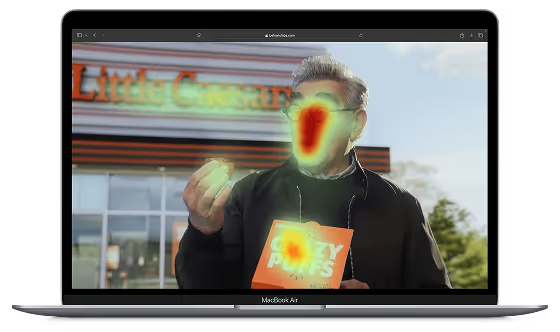Industry benchmarks are important but rather tricky. Here's why:
- The industry standard is seldom the right benchmark.
- For most metrics, your industry is irrelevant. You have to cut through current advertising noise including ads from other sectors.
- For some metrics, you have to benchmark against concrete competitors.
The benchmarking process—determining if you’re better or worse at something than others—is much more exciting than the original numbers behind them.
For example, if I were to tell you your brand doodad was 55%, you’d probably be like: “ok, so?”
But if you found out your brand doodad surpassed 80% of your industry competitors, I bet you’d feel a lot better about that.
.avif)
That’s why benchmarking is so popular—because although you have no idea what “brand doodad” stands for, you know you're outperforming others.
Unsurprisingly, vendors in the market research space are promoting themselves with claims like, “We have 200,000 benchmarks across 3,000 product categories!"
Well, good for them. But here is what you should really know about the benchmarking process.
1. Less (and relevant) benchmarking is more
Famously, in 1936, a Literary Digest magazine polled 2 million of its readers to predict that Roosevelt would lose the election.
Plot twist, Roosevelt won in a landslide.
However, another rather obscure pollster, who despite having a sample size 20 times smaller than their competitor, predicted the election correctly. This was of course none other than George Gallup, one of the biggest names in market research today.
This historical prediction marked a new era in statistics. The idea that you need a ginormous sample of millions of respondents to get accurate results has been proved wrong.
A sample of 1,000 people who correctly represent the target population by income and other socio-demographics, is more than enough. You just don’t need more.
Similarly, it’s much better to have several hundreds of good benchmarks than hundreds of thousands of bad ones – representing irrelevant ads or outdated metrics.
So, what are the good benchmarks? What should the ads you are comparing yourself to represent?
In most cases, the answer is current advertising noise.
2. To cut through, benchmark against current advertising noise
It’s tempting to compare yourself to your industry, and your direct competitors. You’re supposed to beat these guys after all.
But here is the problem with competitive benchmarking: the brains of the people scrolling through their smartphones or watching TV don’t care about industries.
Your primary goal is to get their attention – to cut through the advertising noise, whether it consists of cars, dating apps, or food for pandas.

Imagine you are in an industry that really sucks at advertising. You can easily be the best in many key metrics but still get zero attention.
Automotive advertising, for example, tends to be quite conservative. Most ads consist of a car driving through some obscure scenery, with a brand mentioned in the final pack-shot.
Lower effectiveness, lower return on ad spend. Always look outside your industry box, or some future Tesla of your industry will.
Good benchmarking requires a random sample of all ads that have recently aired.
It’s more effective to have a hundred diverse, up-to-date commercials than to analyze thousands that are skewed toward a particular industry or are outdated by a decade.
3. Building brand memory structures: when your only option is being the best
So far, we’ve focused on grabbing attention. But capturing attention is just the first step in effective advertising.
The key to mind-winning advertising is to establish the fastest neural link between a specific customer need and a specific brand.
For example, “I want to buy something online" → Amazon.

And that’s where external benchmarking gets really tricky. Because only the winner counts.
The human brain simply chooses the most mentally available brand. It doesn’t matter if you’re ranked third or fourth in terms of quality. The key metric is: how quickly does your brand come to mind?
In this case, industry averages won’t help. Instead, focus on identifying which specific brands are top-of-mind—whether for different customer segments or distinct needs within your market.
Conclusion
So, let’s sum it up: you either need to break through the current advertising noise—including ads from other industries—or gather data on your specific competitors.
In either case, the industry average won’t be of much use.
Does it sound a little complicated?
The good news is that Behavio shows you simply what you need – benchmarking current advertising noise or concrete competitors’ data – right next to your metric.











.avif)








